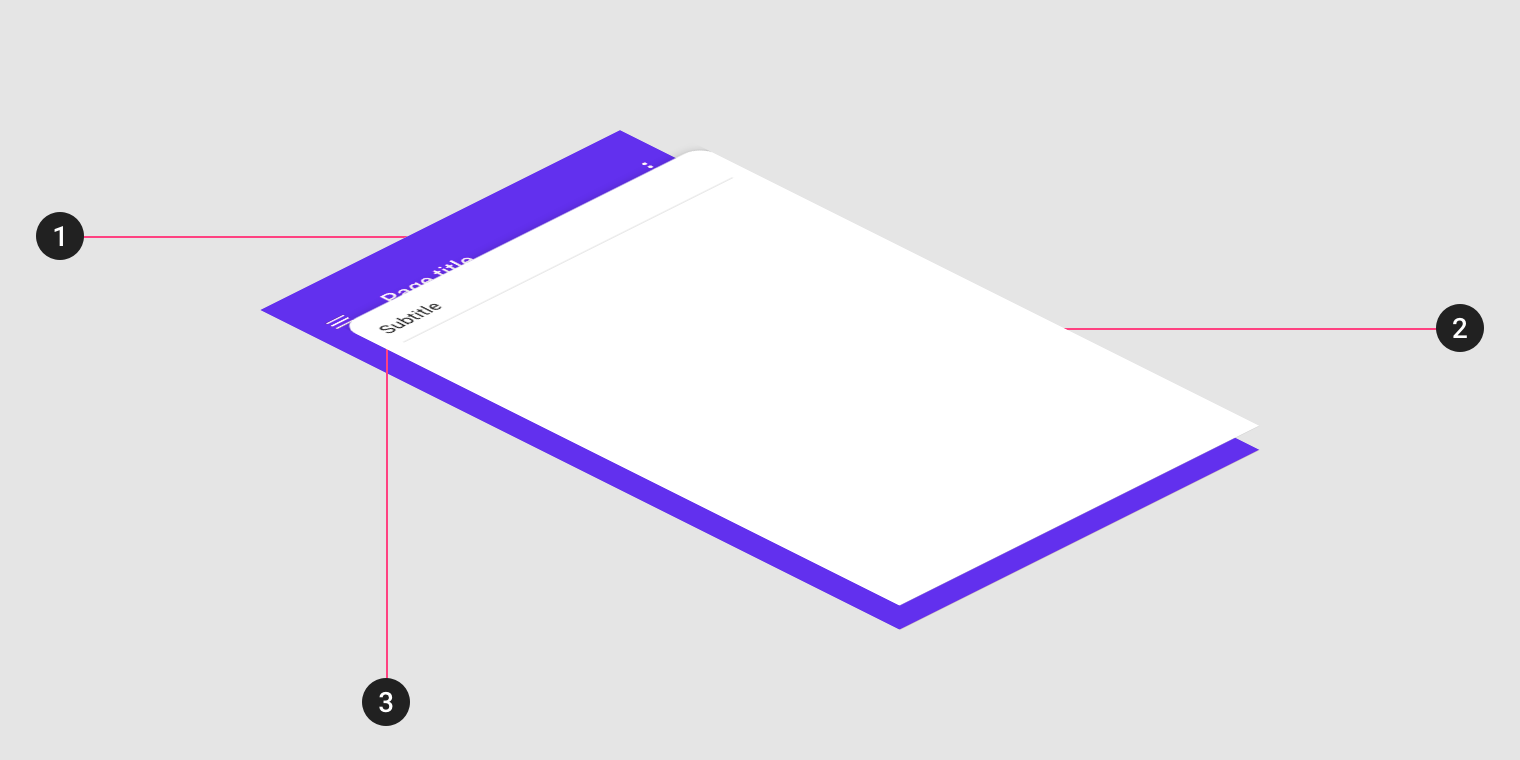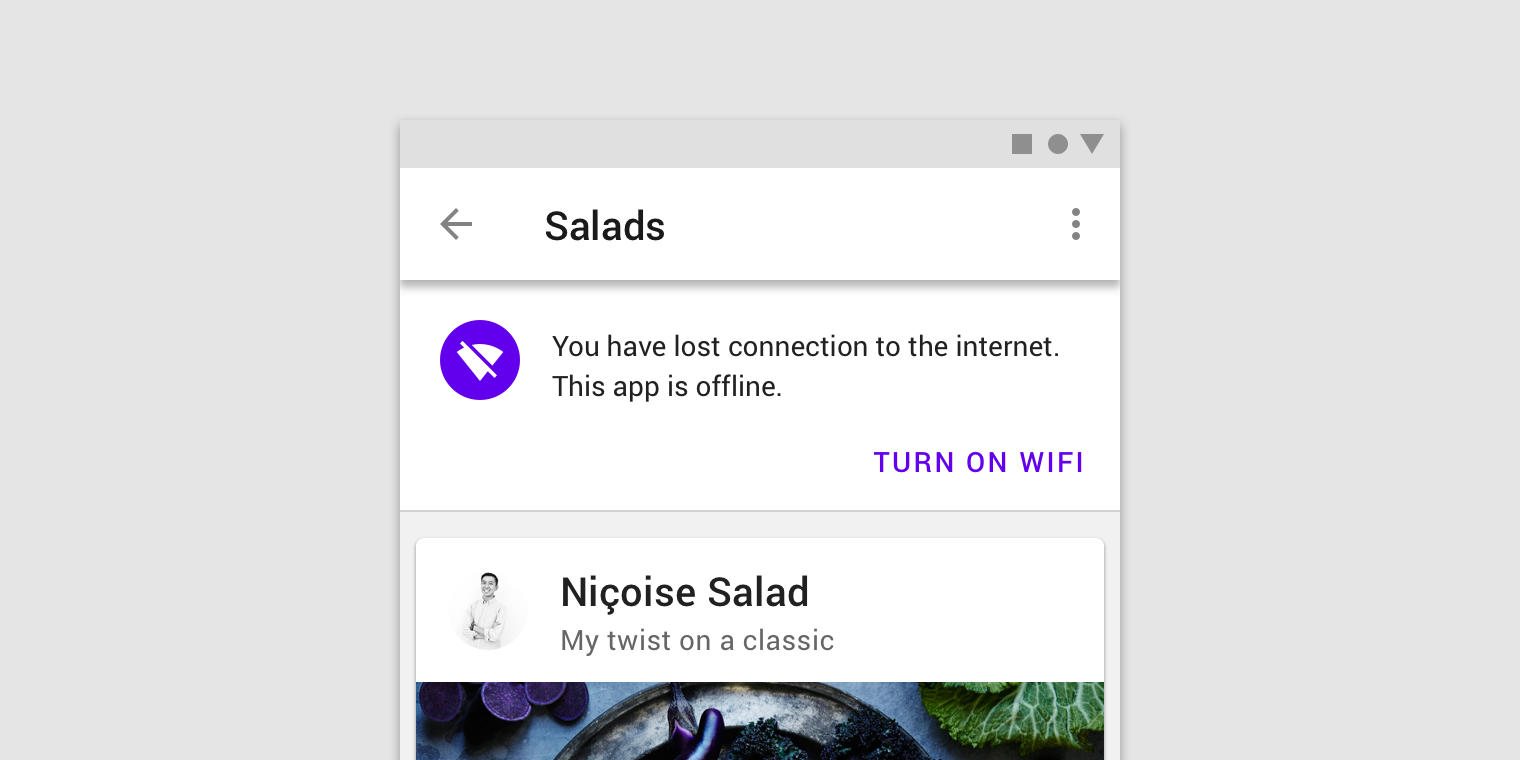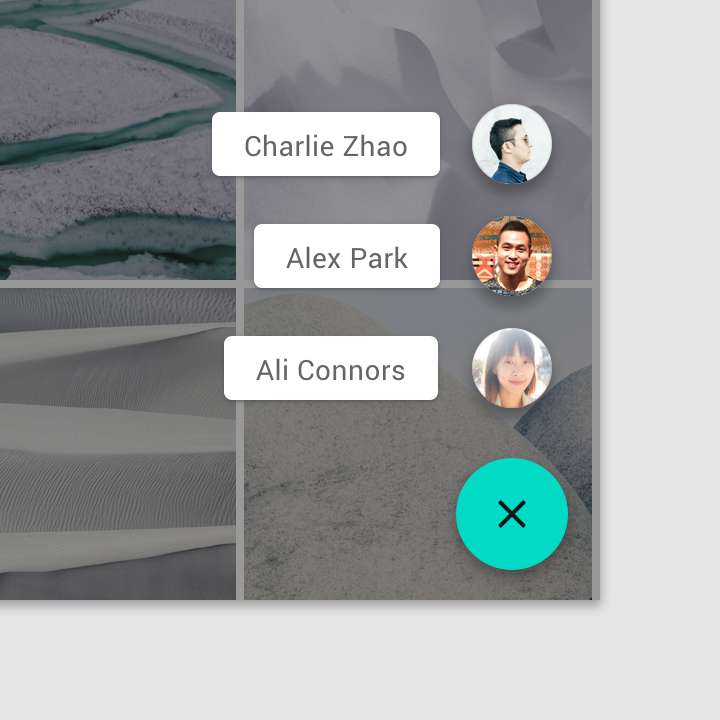README
Introduction
This project contains Material Design components built with Angular and Angular Material. Its goal is to provide components that are not yet implemented in Angular Material.
It follows the Angular Material project approach, meaning that each component will be inside of its own module, so that you only have to import the one you are interested in, and not the whole library.
Feel free to follow and/or contribute to the project.
Add it to your project
Step 1. Install the npm package
Inside of your Angular project, run the following command:
npm install @cotecna/material --save
Step 2. Add Dependencies
- In order to have the Material Icons displayed correctly, make sure to add them by including the following line in your
index.htmlfile:
<link href="https://fonts.googleapis.com/icon?family=Material+Icons" rel="stylesheet">
- Import the
BrowserAnimationsModuleinto yourAppModule.
import { BrowserAnimationsModule } from '@angular/platform-browser/animations';
@NgModule({
declarations: [
// your components here
],
imports: [
// your imports here
BrowserAnimationsModule,
],
providers: [
// your providers here
],
bootstrap: [AppComponent],
entryComponents: []
})
export class AppModule { }
- Install Angular Material
npm install --save @angular/material @angular/cdk
- Add an Angular Material theme. You can create one (learn how) or import an existing one by adding it in your
styles.scssfile as follows:
@import '~@angular/material/prebuilt-themes/deeppurple-amber.css';
Available Components
Backdrop
This component is what is referred to as the Backdrop in Material Design docs. See the image below to understand it easily:
 Image from Material Design documentation site
Image from Material Design documentation site
It is indeed a set of components (Backdrop, BackdropBackLayer, BackdropBackLayerToolbar. BackdropBackLayerContent, BackdropFrontLayer, BackdropFrontLayerSubtitle and BackdropFrontLayerContent).
API Reference
import { BackdropModule } from '@cotecna/material';
Methods
| Name | Description |
|---|---|
| reveal() | It pulls the Front Layer down revealing the Back Layer. It will usually be triggered from a menu, search, filter (or whatever other) button on the toolbar. If the content of the Back Layer is larger, it will become scrollable. You should remember to disable your Front Layer's content when the Back Layer is revealed. |
| conceal() | Pulls the Front Layer up covering the Back Layer. |
Using the Backdrop
Add it to your template as shown below:
<comat-backdrop>
<comat-backdrop-back-layer>
<comat-backdrop-back-layer-toolbar>
<!-- Back Layer Toolbar Content Here -->
</comat-backdrop-back-layer-toolbar>
<comat-backdrop-back-layer-content>
<!-- Back Layer Content Here -->
</comat-backdrop-back-layer-content>
</comat-backdrop-back-layer>
<comat-backdrop-front-layer>
<comat-backdrop-front-layer-subtitle>
<!-- Front Layer Subtitle can have an Icon, a Title and an Icon Button like this -->
<mat-icon>folder</mat-icon>
<span>Sponge Bob's drive</span>
<button mat-icon-button>
<mat-icon>more_vert</mat-icon>
</button>
</comat-backdrop-front-layer-subtitle>
<comat-backdrop-front-layer-content>
</comat-backdrop-front-layer-content>
</comat-backdrop-front-layer>
</comat-backdrop>
To use the Backdrop functionality like revealing or concealing it, in the component where you want to call it from:
@ViewChild(BackdropComponent)
backdrop: BackdropComponent;
revealBackdrop(){
this.backdrop.reveal();
}
concealBackdrop() {
this.backdrop.conceal();
}
Banner
This is the Banner in Material Design docs. See the image below to understand it easily:
 Image from Material Design documentation site
Image from Material Design documentation site
Keep in mind that this is intended to be used only for mid-priority messages where the user action is optional. It requires user dismissal and can have a maximum of 2 actions.
API Reference
import { BannerModule } from '@cotecna/material';
Properties
| Name | Description |
|---|---|
| @Input() show: boolean | Receives whether the component has to be shown or not. |
| @Input() icon: string | Receives the name of the Material Icon to be displayed. If no icon shown, the text will take its space. |
| @Input() firstSentence: string | Text to be displayed in the first line. |
| @Input() secondSentence: string | Text to be displayed on the second line. This is optional. If no text provider, the first line will be vertically centered. |
| @Input() mainActionText: string | Text to be displayed in the main action button. |
| @Input() secondaryActionText: string | Text to be displayed in the secondary action button. If no text is passed, the button will not be shown. |
| @Output() mainActionClick: EventEmitter(); | Emits an event when the main button is clicked. |
| @Output() mainActionClick: EventEmitter(); | Emits an event when the secondary button is clicked. |
Using the Banner
Add it as shown below to the component where you want to use it.
<comat-banner [icon]="'signal_wifi_off'"
[show]="showBanner"
[firstSentence]="'You have lost connection to the internet.'"
[secondSentence]="'This app is offline.'"
[mainActionText]="'turn on wifi'"
[secondaryActionText]="'dismiss'"
(mainActionClick)="mainActionClicked()"
(secondaryActionClick)="secondaryActionClicked()"></comat-banner>
Note that the BannerComponent is a dumb component, meaning that it does not perform any action whenever one of its buttons are clicked. Instead, it notifies you. Also keep in mind that the BannerComponent does not hide itself, you will have to hide it with the show input property after receiving one of the output events.
Contextual Toolbar
This component is what is referred to as the Contextual Action Bar in Material Design docs. See the image below to understand it easily:
Image from Material Design documentation site
Whenever you have items selected, no matter what they are, it will position itself covering the default MatToolbar (or positioned on the top of the card, based on what you contextualize it to) offering the actions you need it to.
It can also display the progress of the actions by using the method setProgress(string). When invoked, the icons disappear and only a progress indicator together with the given message will be displayed. Once in progress mode, you can keep passing new messages with the same method to update the progress message as it internally uses a BehaviorSubject. To go back to the normal state, just invoke its stopProgress() method.
API Reference
import { ContextualToolbarModule } from '@cotecna/material';
Appearance
By default, it will have the regular MatToolbar appearance with grey background and black font. As custom themes are not accessible from the libraries' mixins, you can customize the appearance with plain CSS by setting the variable --primary for the Contextual Toolbar Font Color, and the --primary-lighter for the Contextual Toolbar Background.
Here is an example of what you need to include in your CSS corresponding to the default Indigo color palette, being the primary the hue 500, and the lighter the hue 100 (you can add the colors according to your to your palette):
:root {
--primary: #3F51B5;
--primary-lighter: #C5CAE9;
}
Properties
| Name | Description |
|---|---|
| @Input() count: number | Receives the number of items that have been selected |
| @Input() actions: ActionElement[] | Receives an array of actions to be displayed in the right corner. See below what an action looks like |
| @Input() displayMode: ContextualToolbarDisplayMode | Receives whether to show Icons, Text or both in the Contextual Toolbar Actions. |
| @Input() moreActions: ActionElement[] | Receives an array of additional actions that will be shown as a menu under the more button that will be automatically created. See below what an additional action looks like |
| @Input() contextualizeTo: string | Contextualizes the toolbar either to the page or to the parent card. It is defaulted to page mode. See below the different contextualizations it can have |
| @Output() selectedAction: EventEmitter |
Emits an event with the selected action so that you can process it. |
| @Output() clearSelection: EventEmitter(); | Emits an event when the clear button (on the left side) is clicked. |
Methods
| Name | Description |
|---|---|
| setProgress(progressMessage: string) | Changes the Contextual Toolbar state to progress mode and displays the given progress message. |
| stopProgress() | Changes the Contextual Toolbar state to normal mode, hiding the progress mode. |
Model
Actions
The actions property receives an array of ActionElement.
export interface ActionElement {
name: string;
icon: string;
text?: string;
tooltip: string;
}
Contextual Toolbar Display Mode
The possible display modes for Contextual Toolbar Actions.
export enum ContextualToolbarDisplayMode {
icons = "icons",
text = "text",
all = "all"
}
More Actions
Same as with the actions, it expects an array of ActionElement.
Contextualization
The Contextual Toolbar gives actions related to the selected content. It can currently be contextualized to the page (which will cover the main toolbar of the application on the top) or to the parent card (it will occupy the parent card's header - be aware that the parent card has to have its position: relative in order to display the toolbar correctly, which would be placed inside the card's content).
You can use the contextualizeTo property with the values page or card.
Using Contextual Toolbar
Add it to as shown below components where you will have selections:
<comat-contextual-toolbar [count]="selection.selected.length"
[actions]="actions"
[moreActions]="moreActions"
[contextualizeTo]="'card'"
(selectedAction)="actionSelected($event)"
(clearSelection)="clearSelection()"></comat-contextual-toolbar>
Note that the ContextualToolbarComponent itself does not do any action, but notifies you instead. This means that you need to listen to the events it emits and take action. For instance, when the component emits the clearSelection event, you will need to clear the selection on your component. In this way, when the count is 0, the ContextualToolbarComponent will dissappear.
i18n
There is no much text in this component if you consider internationalization, only the number of selected items, the tooltip of the icons or the name of the menu items when clicking on the more button.
- For the number of selected items, it has an
i18nattribute set to@@contextualSelectedItems. You just need to have this key in your translations if you want to localize it, otherwise, it will show the number of selected items plus the "selected" word in English. - For the tooltips of the buttons, you can use the
tooltipattribute of theActionElementwhen passing theactionsinput property to the component. - The
morebutton also has ani18nattribute, in this case, set to@@moreActions. If no key is found in your project, it will show the word "more". - For the items in the menu when clicking on
more, you can use again thetooltipattribute of theActionElementwhen passing themoreActionsinput property to the component.
(FAB) Speed Dial
This component is what is referred to as the FAB Speed Dial in Material Design docs. See the image below to understand it easily:
 Image from Material Design documentation site
Image from Material Design documentation site
API Reference
import { FabSpeedDialModule } from '@cotecna/material';
Properties
| Name | Description |
|---|---|
| @Input() mainIcon: string | Receives the name of the Material Icon to be displayed in the main FAB |
| @Input() actions: ActionElement[] | Receives an array of actions to be displayed in the right corner. See above what an action looks like |
| @Output() selectedAction: EventEmitter |
Emits an event with the selected action so that you can process it. |
Using the Speed Dial
<comat-fab-speed-dial
[mainIcon]="'add'"
[actions]="fabSpeedDialMenuActions"
(clickMenuAction)="onClickMenuAction($event)">
</comat-fab-speed-dial>